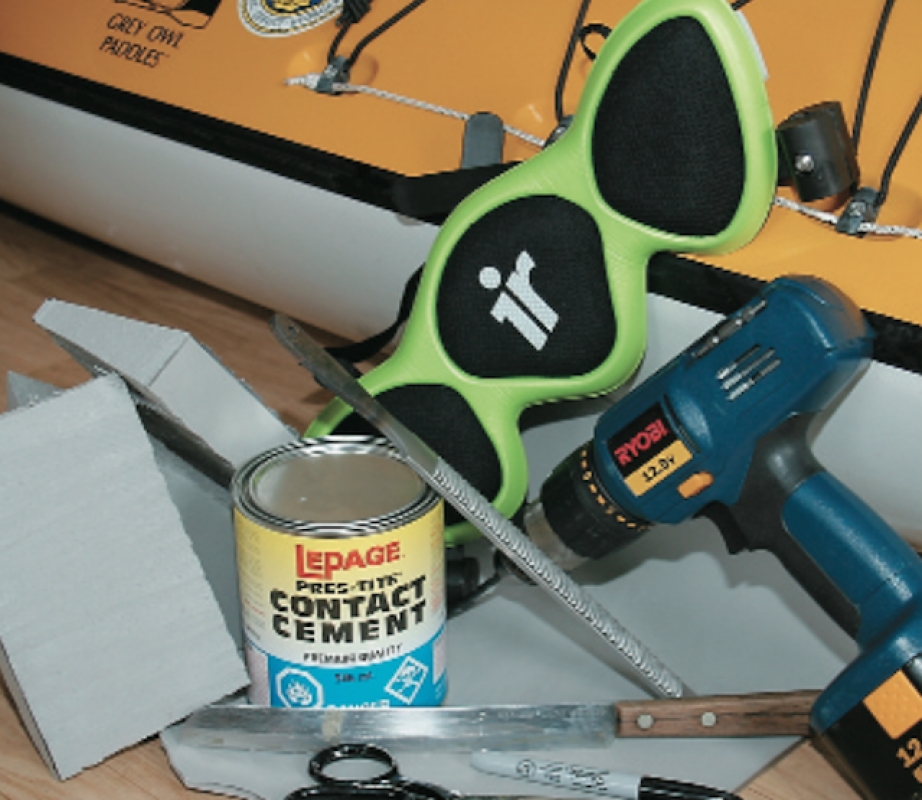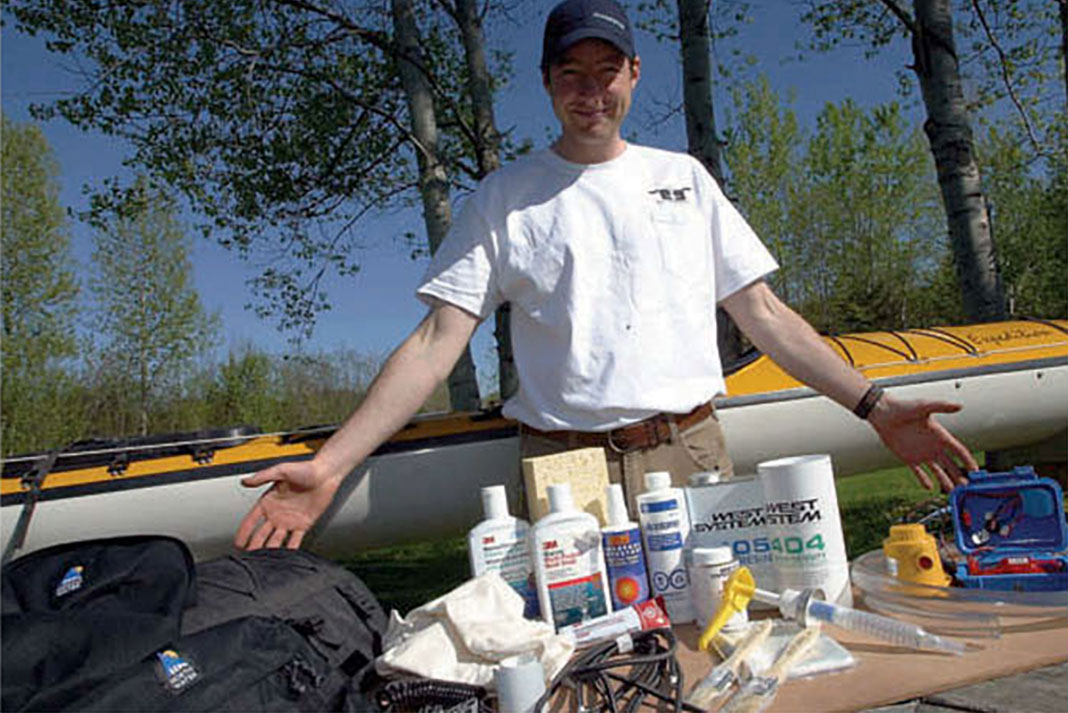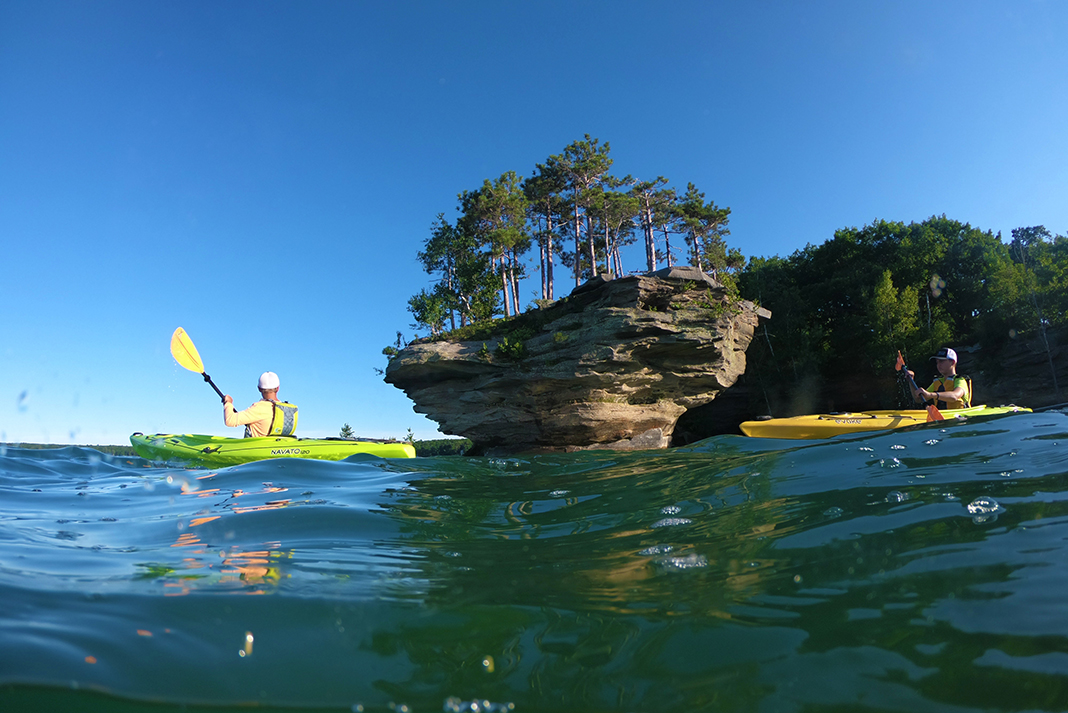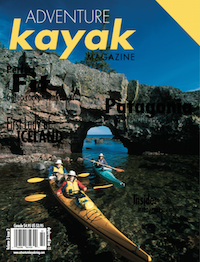Learning to properly outfit your kayak cockpit before you decide to spend hours in it can provide you much-needed comfort once you set out. I decided in my last year of university that it would be an adventure to paddle home. When my new boat finally arrived, just days before I was to leave, packing three and half months’ worth of gear inside seemed more important than installing custom outfitting. Twenty-four hundred kilometres that summer and dozens of trips since and my Current Designs Expedition still didn’t have outfitting. Like many paddlers I hadn’t invested a few evenings or one rainy afternoon to improve both comfort and performance.
DIY kayak cockpit makeover
Kayak companies are making huge advances with ergonomically designed cockpits, adjustable seats and thigh braces, but it is impossible to match every paddler’s shape and size. You can achieve a custom fit in a few hours at home with some chunks of foam, a can of contact cement and a couple of hand tools.
The key to outfitting a kayak is simple: put your body in the most natural position and support it there so you can comfortably paddle for hours and move the boat without sliding around inside it. It is easiest to break kayak outfitting into five areas; seat, thighs, hips, lower back and feet.

1 Seat
Your seat is the anchor point that connects you to the kayak. It is the first place to begin your outfitting makeover because how you outfit your seat determines how you fit into the rest of the boat.
If you are paddling a deep boat and it feels like the cockpit rim is up to your chest and your thigh braces are floating far above your knees, you could raise your seating position by gluing a layer of foam to the seat. Raising your seat will raise your centre of gravity slightly but what you lose in stability you will gain in a greater sense of control. It’s like raising the seat in your car and finally being able to see over the dash.
Even a thin layer of foam adds welcome cushion, warmth and grip to a fibreglass or plastic seat. You can cleverly channel your seat pad to sit above, rather than in, any water that pools below your butt.
When you are seated in your kayak properly with your feet on your pegs, your legs should be comfortably bent with your thighs resting flat against the bottom of the cockpit rim or the thigh braces. If your legs don’t reach the thigh braces, you’ll either need to raise your seat so your legs don’t have to bend up as much to reach the thigh braces, pad the thigh braces down to meet your thighs, or raise the angle of the seat to bring your legs up to the thigh braces.
Make sure the seat comfortably supports your butt and the backs of your legs. Sometimes the front edge of a short kayak seat or even a long seat at the wrong angle will apply pressure to your hamstrings. Even minimal constant pressure can reduce circulation and pinch nerves causing anything from cold feet to tingling, numbness, pain and, in the case of airline “economy class syndrome,” even death. The solution is a seat of the correct length and angle to provide support with no pressure points. A short seat can be extended using blocks of foam glued to the front of the seat and the floor.
2 Thighs
You have already planned out your thigh braces when deciding how much foam to add to your seat. Proper-fitting thigh braces provide points of contact so that you feel like a part of your kayak rather than just sitting in it. Being in contact with the boat adds more control for tilting manoeuvres.
Thigh braces can be as simple as a flat piece of foam glued to the underside of the cockpit or elaborately shaped works of art that wrap around and hook the inner thigh to keep it in place. Strive for as much contact as possible which might mean some getting in and out and more carving and shaping to find the correct angle that meets your leg.
3 Hips
Hip pads are the simplest performance improvement you can make to your kayak. Kayak seats are often made quite wide to accommodate all sizes of paddlers. Hip pads fill the gap between your hips and the edge of the seat so that you feel the kayak beside you. Tilting is now easier, and holding an edge is more comfortable. Like thigh braces, hip pads can be simply a thin layer of foam glued to the seat pillar to prevent you from sliding side-to-side or they can wrap overtop of your thighs to help hold you into the boat once you’ve mastered the roll.
4 Lower Back
Few paddlers are disciplined enough to sit erect in their seats for hours on end to maintain the natural position of the spine. So kayak companies have come to the rescue with backrests. Kayakers don’t need backrests like park benches, however. They need back support. When you lean back even slightly onto a backrest, your pelvis rolls forward as the spine bends outward, stretching the ligaments in your back. It’s the stretching of the ligaments that leads to fatigue, pain and even muscle spasm after a long day on the water. The best sitting position for the lower back emulates its curvature when standing, using stomach muscles to hold that upright position. This upright position is the best position for maximizing torso rotation and making powerful, effective strokes.
Backrests typically bolt to the back of the kayak seat and don’t provide the adjustable lumbar support of a custom-installed backband. A backband works independently of the seat and can be adjusted up or down to fit your lumbar position and then tightened to hold you upright taking the pressure off your stomach muscles.
5 Feet
Our poor feet get stuffed up inside the kayak and forgotten about. Big paddlers must ensure that their feet fit in the cockpit with every seasonal combination of paddling footwear. Smaller paddlers have a different problem: sometimes they can only reach foot pedals with their toes. To solve this problem, glue a piece of foam to the pedal and/or pad the bottom of the kayak with a layer of foam to raise the heels until the balls of the feet contact the pedals. Anyone can benefit from a thin layer of foam under the heels for barefoot comfort, and/or a layer of rubber under the heels to prevent sandy footwear from rubbing holes in the boat.
An overhead shot of a pile of foam pieces and other tools to outfit the cockpit of a sea kayak. | Feature photo: Adventure Kayak staff




 This article was first published in the Early Summer 2003 issue of Adventure Kayak Magazine.
This article was first published in the Early Summer 2003 issue of Adventure Kayak Magazine. 